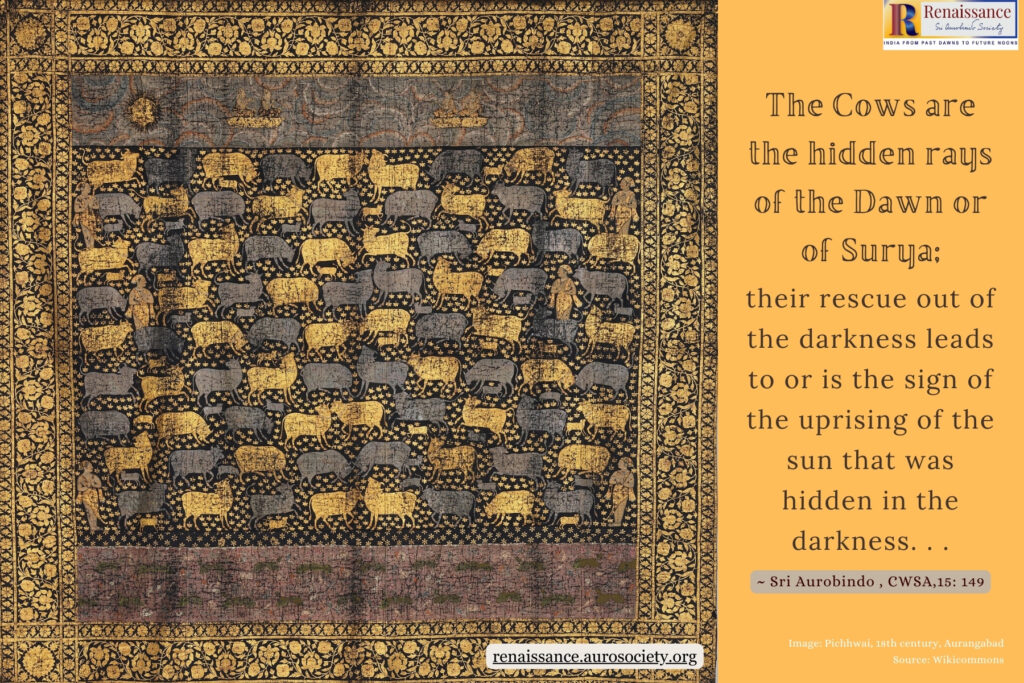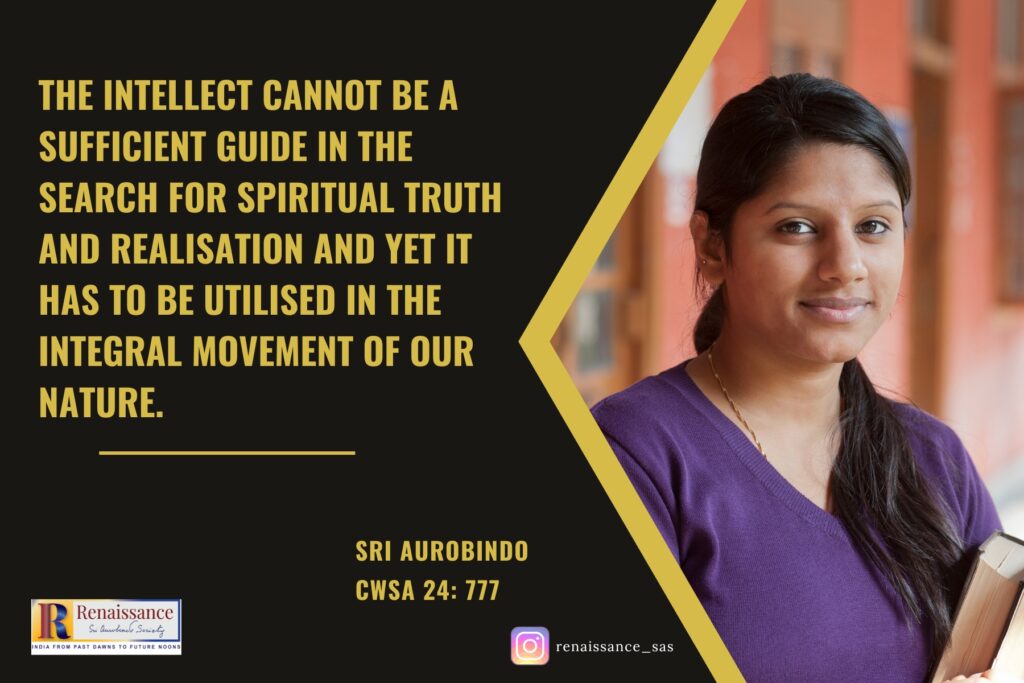Editor’s note: In these passages Sri Aurobindo explains that values can not be imposed on a child through textbooks. The best approach is when teachers and parents serve as living examples. Children should be encouraged to gradually purify their habits. Rich stories can also be powerful means to expose children to higher ideals and values.

True moral education
In the economy of man the mental nature rests upon the moral, and the education of the intellect divorced from the perfection of the moral and emotional nature is injurious to human progress. Yet, while it is easy to arrange some kind of curriculum or syllabus which will do well enough for the training of the mind, it has not yet been found possible to provide under modern conditions a suitable moral training for the school and college.
The attempt to make boys moral and religious by the teaching of moral and religious text-books is a vanity and a delusion, precisely because the heart is not the mind and to instruct the mind does not necessarily improve the heart.
It would be an error to say that it has no effect. It throws certain seeds of thought into the antaḥkaraṇa and, if these thoughts become habitual, they influence the conduct. But the danger of moral text-books is that they make the thinking of high things mechanical and artificial, and whatever is mechanical and artificial is inoperative for good.
There are three things which are of the utmost importance in dealing with a man’s moral nature, the emotions, the saṁskāras or formed habits and associations, and the svabhāva or nature.
The only way for him to train himself morally is to habituate himself to the right emotions, the noblest associations, the best mental, emotional and physical habits and the following out in right action of the fundamental impulses of his essential nature.
* * *
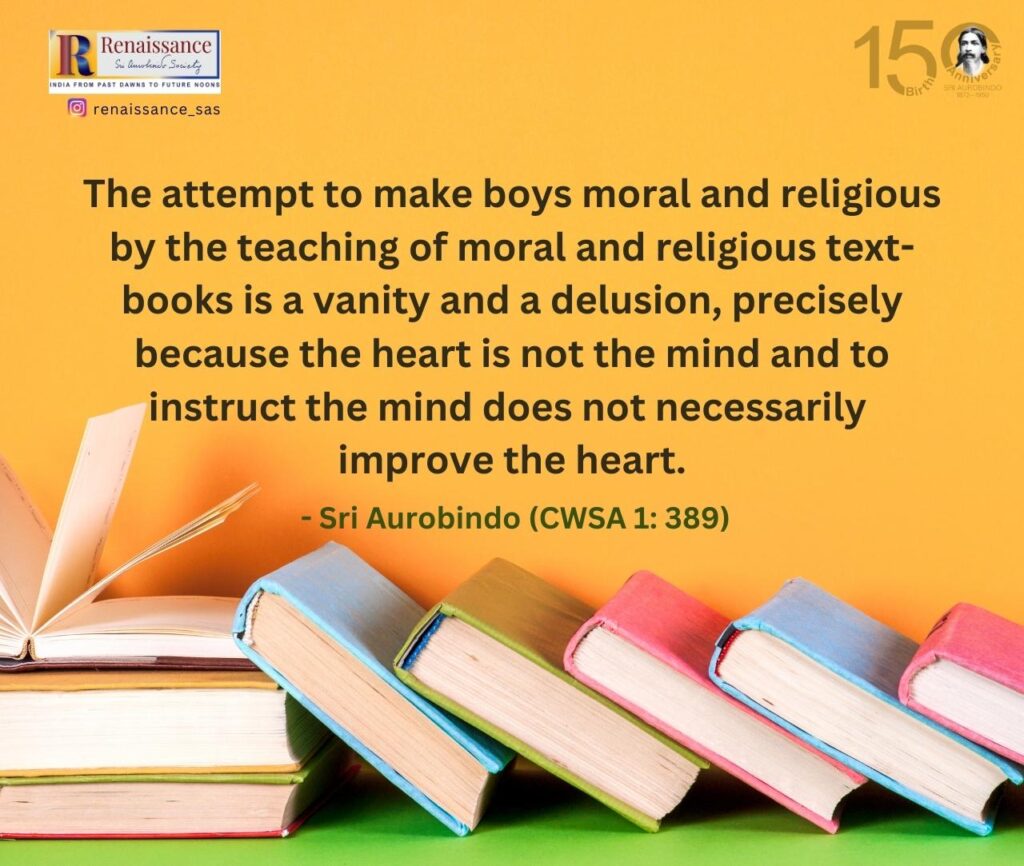
Read:
A True Education for India’s Future: Words of the Mother
You can impose a certain discipline on children, dress them into a certain mould, lash them into a desired path, but unless you can get their hearts and natures on your side, the conformity to this imposed rule becomes a hypocritical and heartless, a conventional, often a cowardly compliance.
This is what is done in Europe, and it leads to that remarkable phenomenon known as the sowing of wild oats as soon as the yoke of discipline at school and at home is removed, and to the social hypocrisy which is so large a feature of European life.
Only what the man admires and accepts, becomes part of himself; the rest is a mask.
He conforms to the discipline of society as he conformed to the moral routine of home and school, but considers himself at liberty to guide his real life, inner and private, according to his own likings and passions. On the other hand, to neglect moral and religious education altogether is to corrupt the race….
As in the education of the mind, so in the education of the heart, the best way is to put the child into the right road to his own perfection and encourage him to follow it, watching, suggesting, helping, but not interfering. . .
Encourage the child towards purification
The old Indian system of the guru commanding by his knowledge and sanctity the implicit obedience, perfect admiration, reverent emulation of the student was a far superior method of moral discipline. It is impossible to restore that ancient system; but it is not impossible to substitute the wise friend, guide and helper for the hired instructor or the benevolent policeman which is all that the European system usually makes of the pedagogue.
The first rule of moral training is to suggest and invite, not command or impose. The best method of suggestion is by personal example, daily converse and the books read from day to day.
* * *
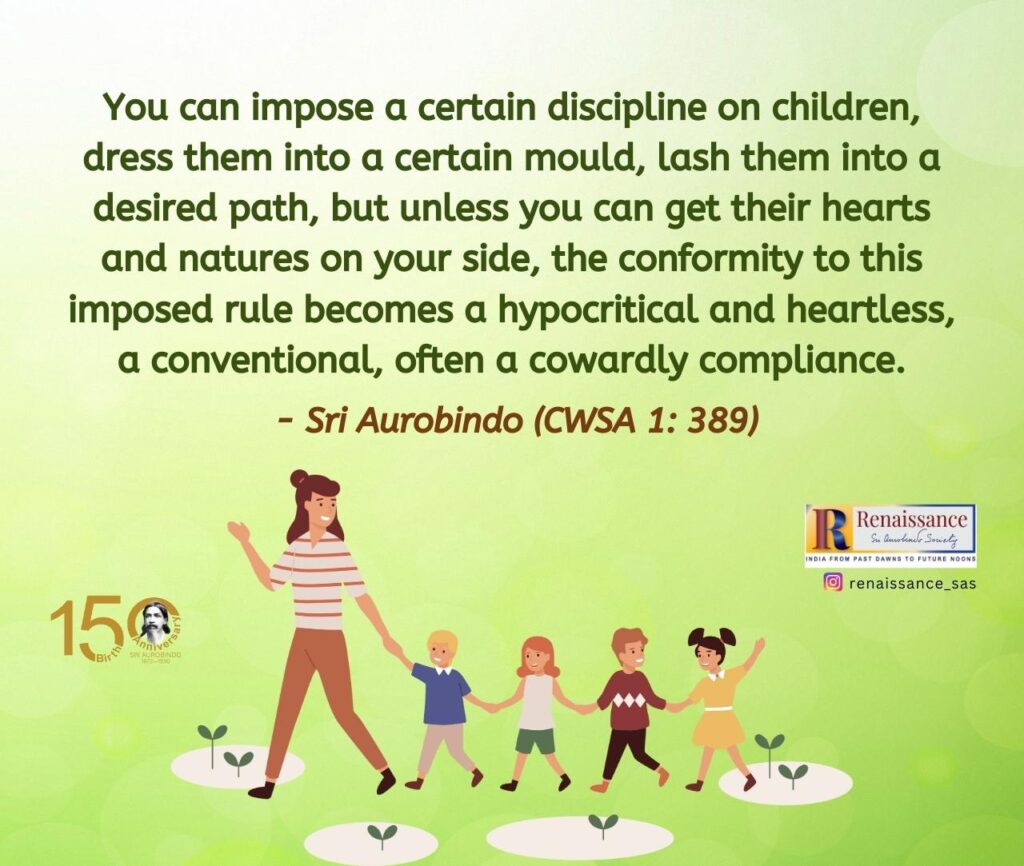
These books should contain, for the younger student, the lofty examples of the past given, not as moral lessons, but as things of supreme human interest, and, for the elder student, the great thoughts of great souls, the passages of literature which set fire to the highest emotions and prompt the highest ideals and aspirations, the records of history and biography which exemplify the living of those great thoughts, noble emotions and aspiring ideals.
This is a kind of good company, satsaṅga, which can seldom fail to have effect, so long as sententious sermonising is avoided, and becomes of the highest effect if the personal life of the teacher is itself moulded by the great things he places before his pupils. It cannot, however, have full force unless the young life is given an opportunity, within its limited sphere, of embodying in action the moral impulses which rise within it.
The thirst of knowledge, the self-devotion, the purity, the renunciation of the Brahmin,—the courage, ardour, honour, nobility, chivalry, patriotism of the Kshatriya,—the beneficence, skill, industry, generous enterprise and large open-handedness of the Vaishya,—the self-effacement and loving service of the Shudra,—these are the qualities of the Aryan. They constitute the moral temper we desire in our young men, in the whole nation.
SEE:
Who is an Aryan and Building Aryan Character
But how can we get them if we do not give opportunities to the young to train themselves in the Aryan tradition, to form by the practice and familiarity of childhood and boyhood the stuff of which their adult lives must be made?
Every boy should, therefore, be given practical opportunity as well as intellectual encouragement to develop all that is best in his nature.
If he has bad qualities, bad habits, bad saṁskāras whether of mind or body, he should not be treated harshly as a delinquent, but encouraged to get rid of them by the Rajayogic method of saṁyama, rejection and substitution. He should be encouraged to think of them, not as sins or offences, but as symptoms of a curable disease alterable by a steady and sustained effort of the will,—falsehood being rejected whenever it rises into the mind and replaced by truth, fear by courage, selfishness by sacrifice and renunciation, malice by love.
Great care will have to be taken that unformed virtues are not rejected as faults. The wildness and recklessness of many young natures are only the overflowings of an excessive strength, greatness and nobility. They should be purified, not discouraged.
– Sri Aurobindo (CWSA, Vol. 1, pp. 389-392)
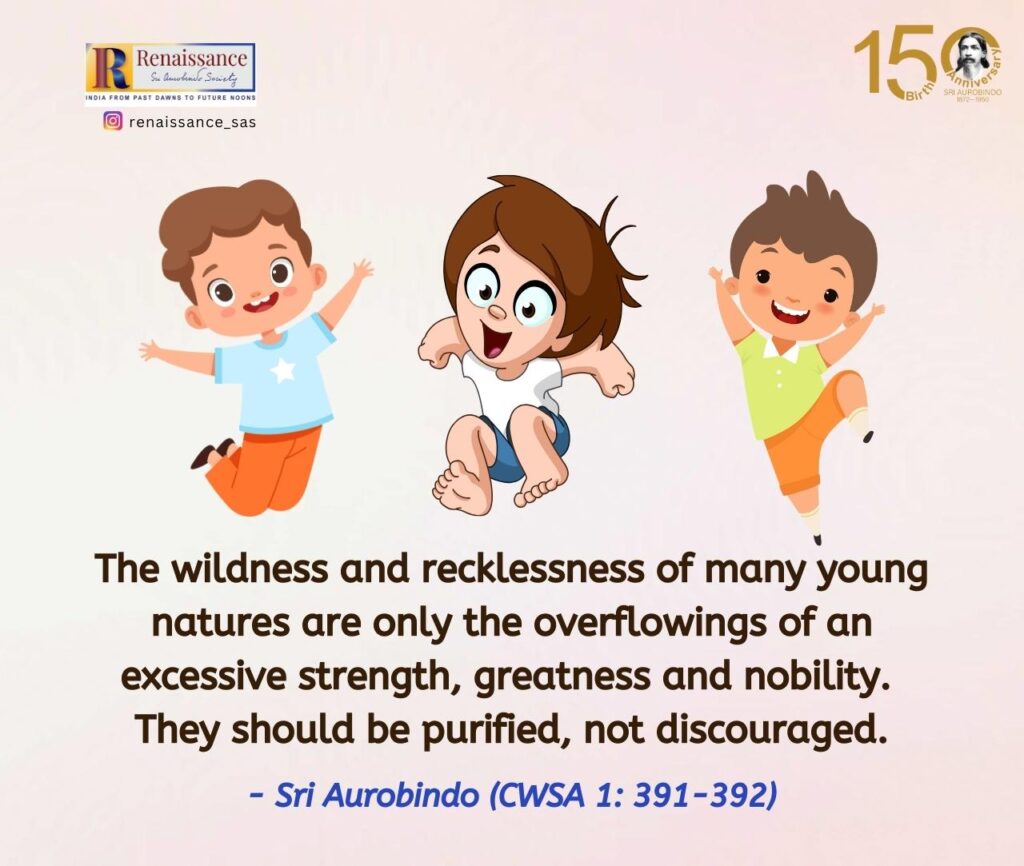
***
Value Education in Ancient India through Stories
The spirit of ancient India was aristocratic; its thought & life moulded in the cast of a high & proud nobility, an extreme & lofty strenuousness. The very best in thought, the very best in action, the very best in character, the very best in literature & art, the very best in religion and all the world well lost if only this very best might be attained, such was the spirit of ancient India. . .
The imagination of the Indian tended as has been well said to the grand & enormous in thought and morals. The great formative images of legend & literature to the likeness with which his childhood was encouraged to develop & which his manhood most cherished were of an extreme & lofty type.
He saw Harischundra give up all that life held precious & dear rather than that his lips should utter a lie or his plighted word be broken. He saw Prahlada buried under mountains, whelmed in the seas, tortured by the poison of a thousand venomous serpents, yet calmly true to his faith. He saw Buddha give up his royal state, wealth, luxury, wife, child & parents so that mankind might be saved.
* * *

He saw Shivi hew the flesh from his own limbs to save one small dove from the pursuing falcon; Karna tear his own body with a smile for the joy of making a gift; Duryodhan refuse to yield one inch of earth without noble resistance & warlike struggle. He saw Sita face exile, hardship, privation & danger in the eagerness of wifely love & duty, Savitri rescue by her devotion her husband back from the visible grip of death.
These were the classical Indian types. These were the ideals into the mould of which the minds of men & women were trained to grow.
– Sri Aurobindo (CWSA, Vol. 7, pp. 1095-1097)
Also Read:
The Initiation – A Story Told by the Mother

~ Design: Raamkumar

